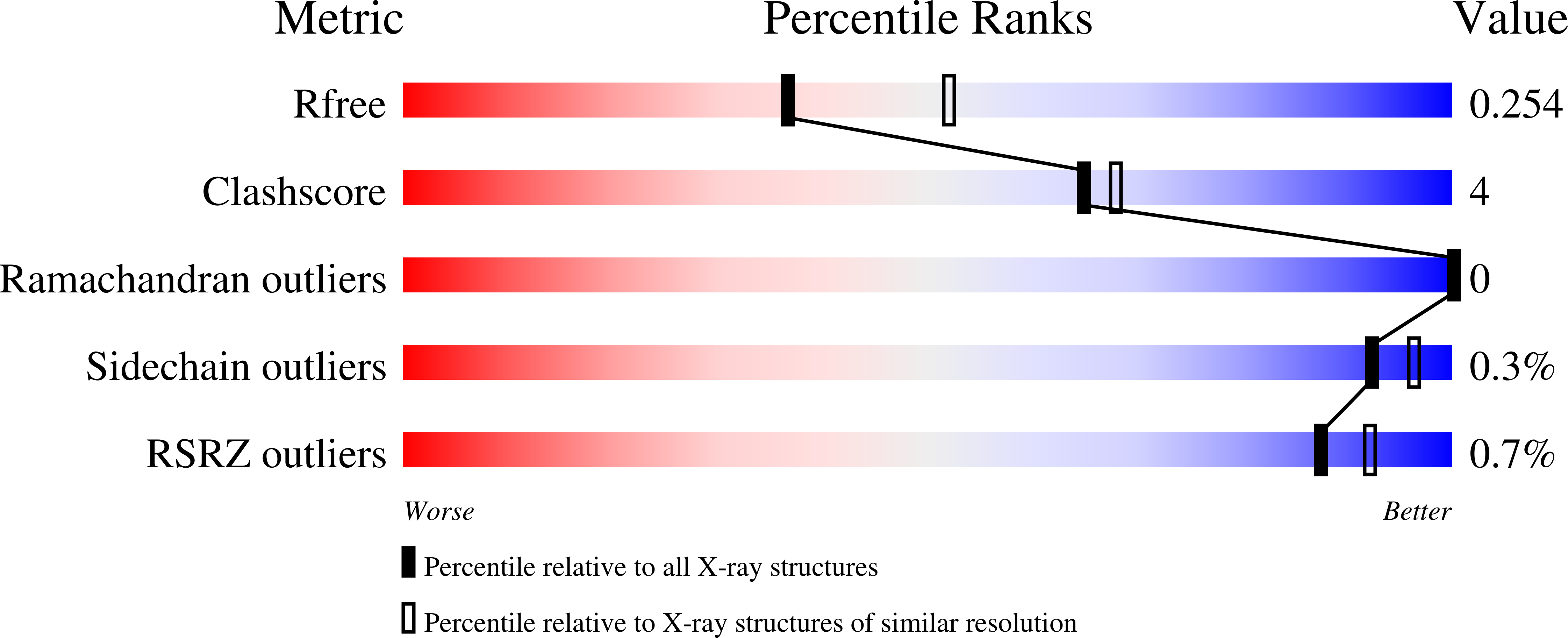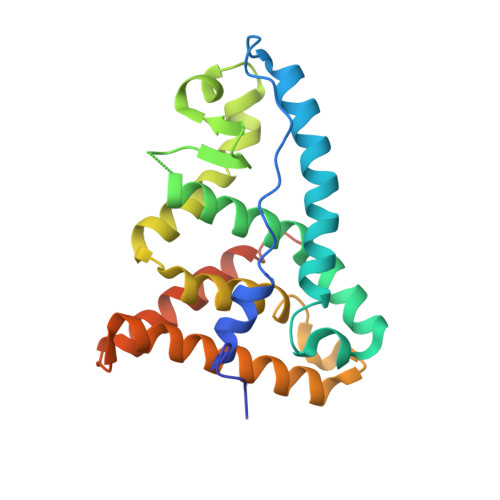Probing Dominant Negative Behavior of Glucocorticoid Receptor beta through a Hybrid Structural and Biochemical Approach.
Min, J., Perera, L., Krahn, J.M., Jewell, C.M., Moon, A.F., Cidlowski, J.A., Pedersen, L.C.(2018) Mol Cell Biol
- PubMed: 29437838
- DOI: https://doi.org/10.1128/MCB.00453-17
- Primary Citation of Related Structures:
5UC1 - PubMed Abstract:
Glucocorticoid receptor Ž┬ (GRŽ┬) is associated with glucocorticoid resistance via dominant negative regulation of GRŽ┴. To better understand how GRŽ┬ functions as a dominant negative inhibitor of GRŽ┴ at a molecular level, we determined the crystal structure of the ligand binding domain of GRŽ┬ complexed with the antagonist RU-486. The structure reveals that GRŽ┬ binds RU-486 in the same ligand binding pocket as GRŽ┴, and the unique C-terminal amino acids of GRŽ┬ are mostly disordered. Binding energy analysis suggests that these C-terminal residues of GRŽ┬ do not contribute to RU-486 binding. Intriguingly, the GRŽ┬/RU-486 complex binds corepressor peptide with affinity similar to that of a GRŽ┴/RU-486 complex, despite the lack of helix 12. Our biophysical and biochemical analyses reveal that in the presence of RU-486, GRŽ┬ is found in a conformation that favors corepressor binding, potentially antagonizing GRŽ┴ function. This study thus presents an unexpected molecular mechanism by which GRŽ┬ could repress transcription.
Organizational Affiliation:
Genome Integrity and Structural Biology Laboratory, National Institute of Environmental Health Sciences, National Institutes of Health, Research Triangle Park, North Carolina, USA.





















